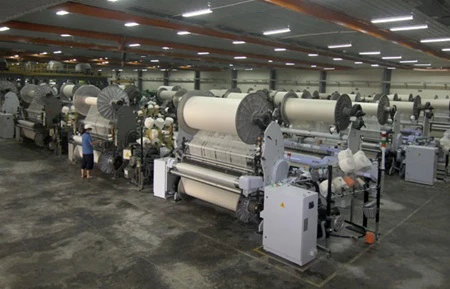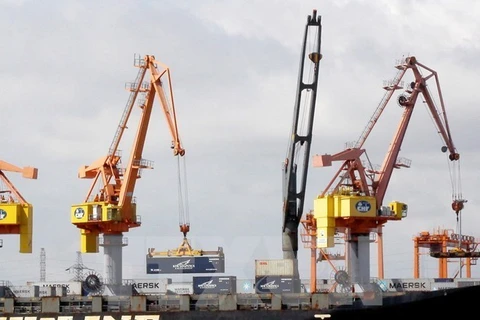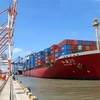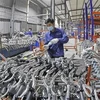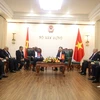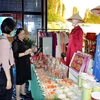 Customs officers in the northern province of Cao Bang inspect goods at Ta Lung International Border Gate. (Photo: VNA)
Customs officers in the northern province of Cao Bang inspect goods at Ta Lung International Border Gate. (Photo: VNA) Hanoi (VNA) – Vietnam saw a reduction in its trade deficit with China in the first quarter of 2016, raising expectations of an ongoing decline in this deficit for the whole year.
According to the General Statistics Office (GSO), in the first quarter of this year, Vietnam’s trade deficit with China fell by 15.6 percent year-on-year to 6.5 billion USD.
During the first quarter, Vietnam gained a year-on-year growth of 8.2 percent to reach 3.9 billion USD from exports to China due to an increase in the export of some key products, including fruit and vegetables, up by 72.8 percent, and telephones and their components, up by 77.1 percent.
Meanwhile, the nation paid 10.4 billion USD for imports from China, 8 percent lower than in the same period last year, due to a reduction in the import of some key Chinese products, such as equipment, down by 13.1 percent, and telephones and their components, down by 18.4 percent.
The positive change was expected to promote the total export value from Vietnam to China to 18.5 billion USD for the whole year, higher than the 17.14 billion USD recorded in 2015, according to the GSO.
The total import value to Vietnam from China was also predicted to fall to 46.5 billion USD for the whole year from a record high of 49.53 billion USD in 2015.
Therefore, Vietnam’s trade deficit with China could drop to 28 billion USD for 2016 from the record level of 32.29 billion USD in 2015, the Thoi bao Kinh te Vietnam (Vietnam Economic Times) newspaper reported.
The good news came in response to the early results of opening the local markets and integrating further with the global market with the signing of many free trade agreements. These agreements will help Vietnam restructure its import and export markets in the future.
However, the office said imports from China still accounted for a large percentage of the total national imports, about 28 percent in the first two months of this year, 2.7 times higher than Vietnam’s export value to China, according to the General Department of Customs.-VNA
